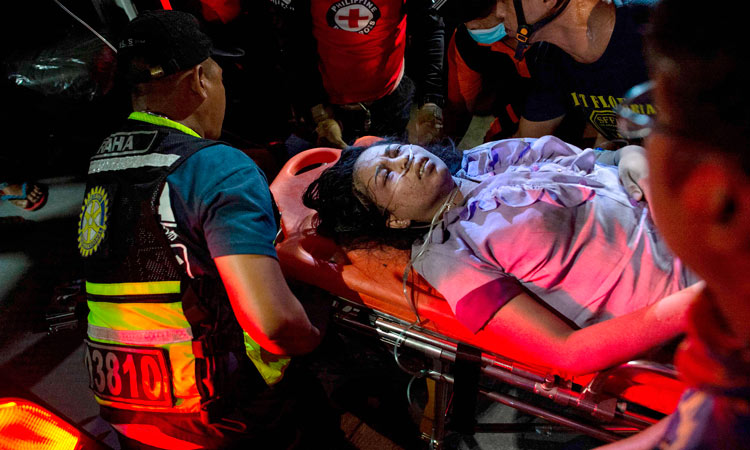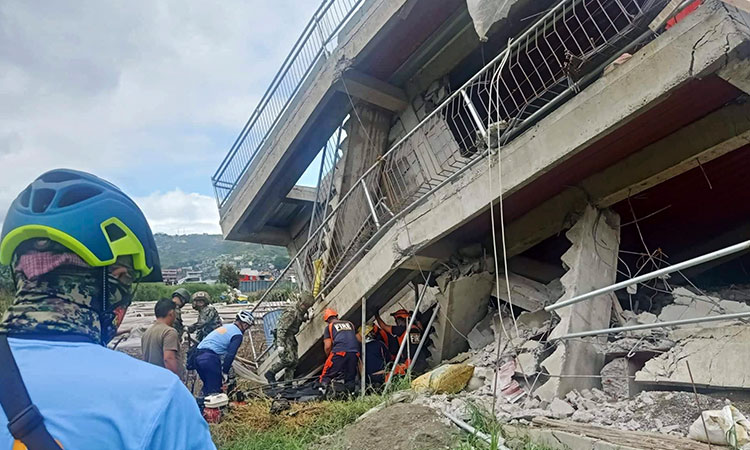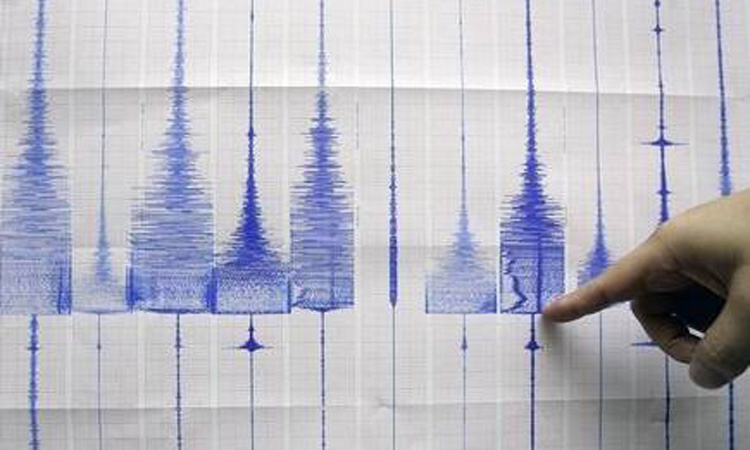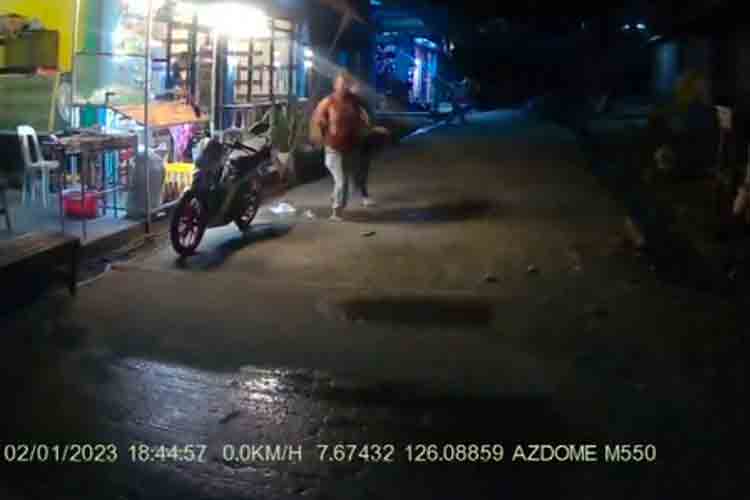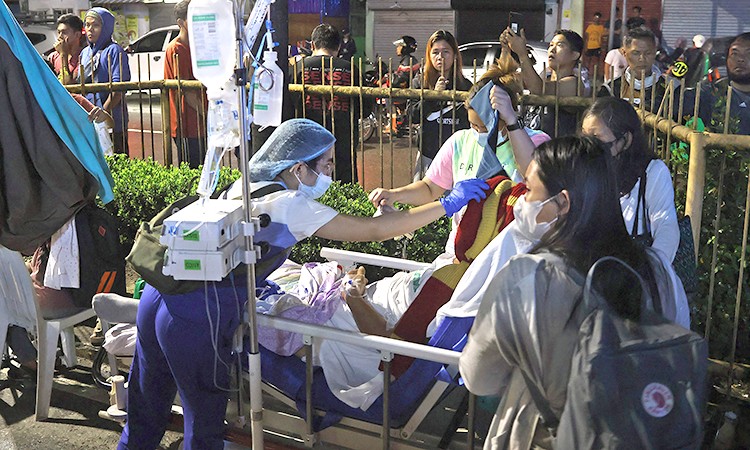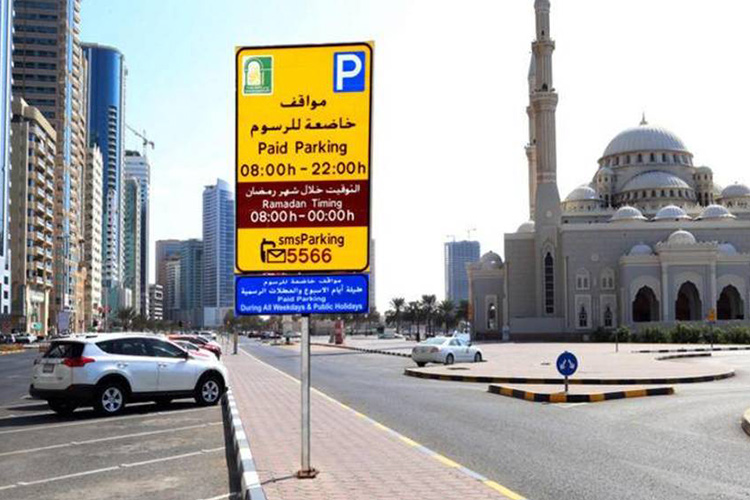New quake strikes as Philippines hunts for survivors
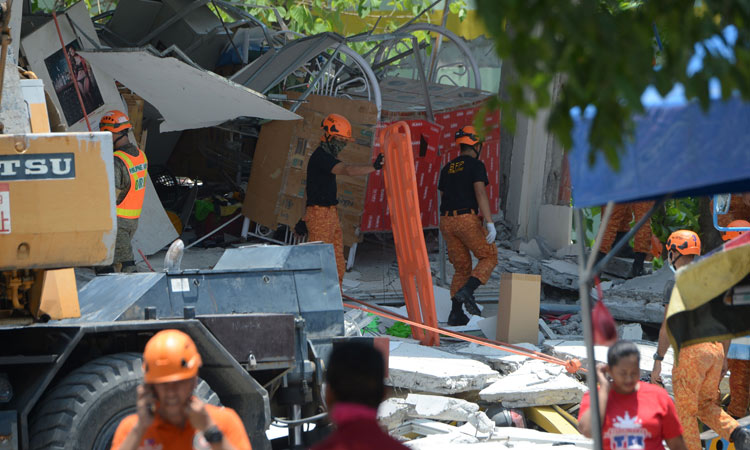
Rescuers prepare a stretcher as they continue to search for survivors. Ted Aljibe/AFP
Philippine rescuers were scrambling Tuesday to reach some two dozen people feared buried under a building near Manila that collapsed a day earlier in a deadly earthquake, as a powerful new tremor hit the nation.
The US Geological Survey put the fresh quake on the central island of Samar at 6.4 magnitude, which is stronger than the one that wrought significant damage Monday near the capital in the north.
The latest quake sent terrified locals fleeing into the streets, with images on social media showing cracked roads, crumbling church walls and shattered glass.
"No one started crying, but of course some panicked because it was really strong," said Rey Estrobo, a supervisor at a hotel in Borongan town, near the epicentre.
"We're still getting hit with aftershocks, even as we speak," he told AFP.
Rescue workers tend to a victim in Porac township, Pampanga province, north of Manila, on Tuesday. Noel Celis/AFP
At the same time, the toll in Monday's quake rose to 16, with most of the fatalities in the worst-hit province of Pampanga, national disaster officials said.
More than 100 others were injured by falling rubble, including in Manila, according to police.
The toll could rise as crews fanned out across the mostly rural region to assess damage in isolated hamlets that lost power and communications in one of the area's strongest tremors in years.
More than 400 aftershocks have been registered since the initial quake, Philippine seismologists said.
“More than 400 aftershocks have been registered since the initial quake.
Scores of rescuers in the town of Porac were using cranes and jackhammers to peel back the pancaked concrete structure of a four-storey market building where the Red Cross said 24 people were unaccounted for.
"Every minute, every second is critical in this rescue," Cris Palcis, a volunteer rescue dog handler, told AFP. "Time is short for the people under the rubble so we have to be quick."
Pampanga Governor Lilia Pineda told journalists that rescuers could still hear at least one person trapped beneath the rubble, but the digging was proceeding delicately to avoid accidentally crushing the survivor.
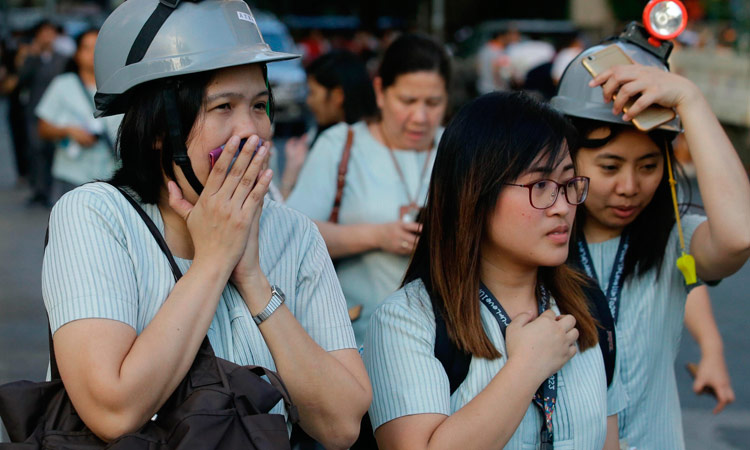
Wearing protective helmets, employees evacuate their office building following an earthquake in Manila.
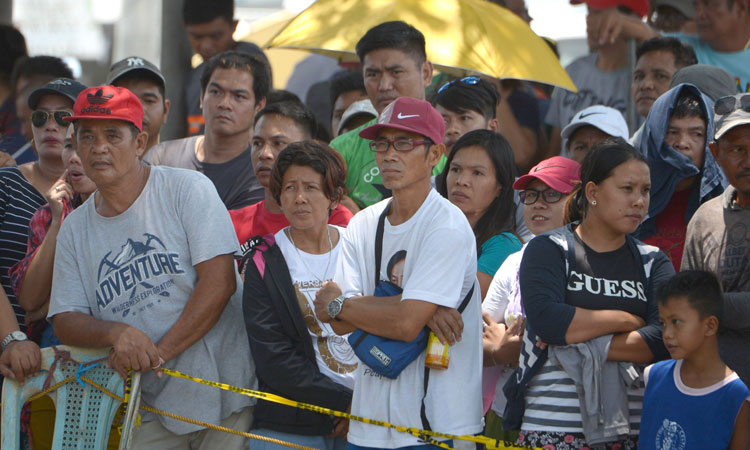
Residents wait for news of their loved ones as recuers continue to search for survivors. Ted Aljibe/AFP
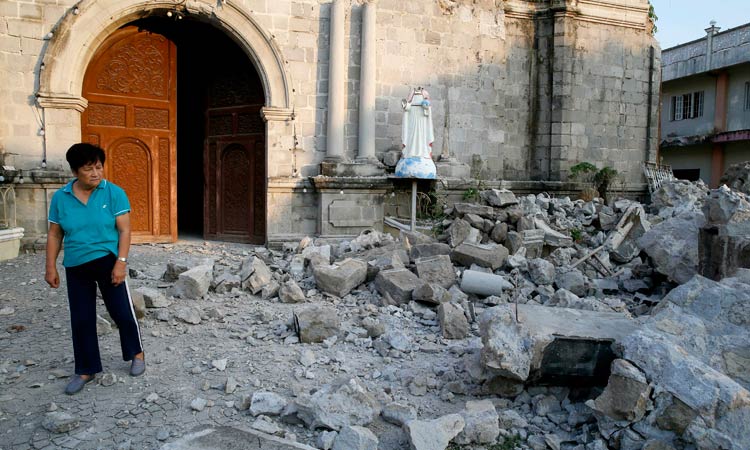
A resident looks at the rubble of St. Catherine's church in Porac township, Pampanga province, north of Manila.
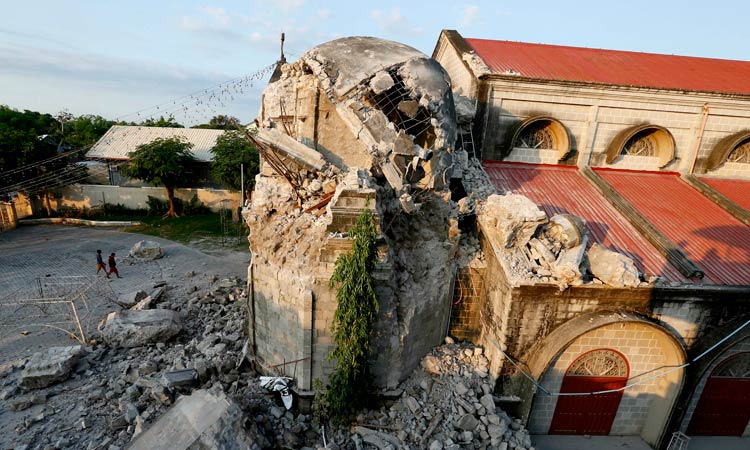
The damage to St. Catherine's church following a 6.1 magnitude earthquake is seen in Porac township.
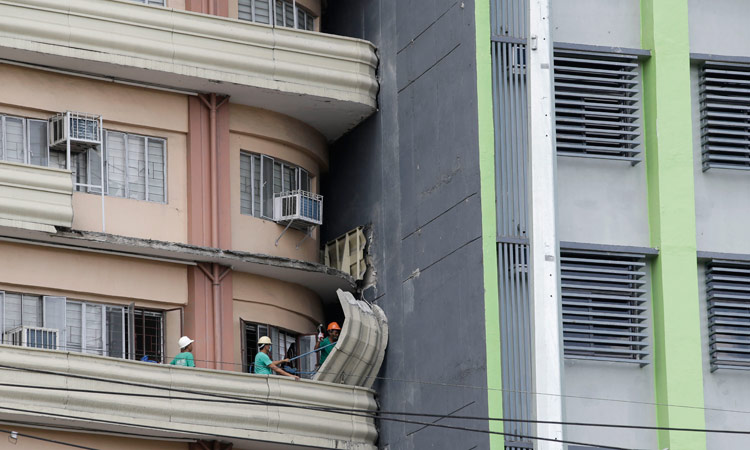
Workers use a hammer as they take out debris from a partially-damaged school in Manila on Tuesday.
The quake also damaged several centuries-old churches which were crowded with worshippers in recent days as the majority-Catholic Philippines marked the Easter holiday.
'Really swaying'
Father Roland Moraleja, who is based in Porac, said the 18th century belfry of the Saint Catherine of Alexandria church collapsed in the quake.
"It was the only part left from the old church," he told AFP. "The historical value is now gone, but we are hopeful that it will rise again."
High-rise buildings in the capital swayed after the tremor struck Monday evening, leaving some with large cracks in their walls.
Thousands of travellers were stranded after aviation authorities shut down the secondary Clark Airport, which is located on the site of the former US military installation that lies about an hour's drive north of the capital.
"No one started crying, but of course some panicked because it was really strong. We're still getting hit with aftershocks, even as we speak.
It was still closed on Tuesday as officials assessed the heavy damage to the terminal building and some cracking on the air traffic control tower.
The quake was centred on the town of Castillejos, about 100 kilometres (62 miles) northwest of Manila, local geologists said.
Seismologists put the Monday's tremor at 6.3 initially, but subsequently downgraded it to a 6.1 magnitude.
The Philippines is part of the Pacific "Ring of Fire", an arc of intense seismic activity that stretches from quake-prone Japan through Southeast Asia and across the Pacific basin.
Agence France-Press
